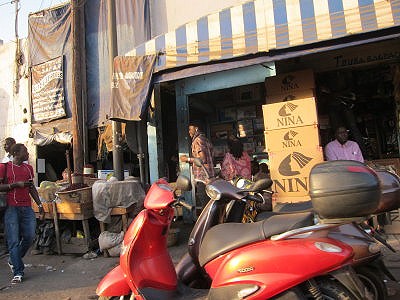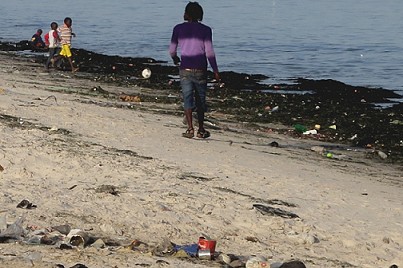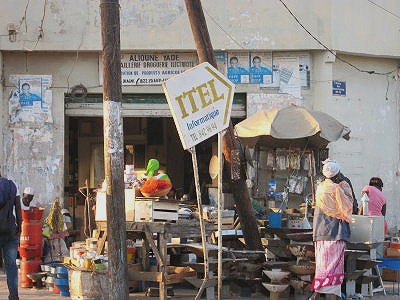Searching sustainable coexistence on the coast
Senegal, April 2013. Travelling from the capital Dakar via Kayar to Saint Louis in the north a visitor gets a flavour of the demands for space and resources on the coast and the difficulties accommodating more and more people. Google Earth images help contextualise some photos illustrating ground realities.

Dakar does not escape the often chaotic urbanisation trends in other major coastal cities elsewhere. The swelling of the population is driven by local demography and the attraction on people finding it difficult to make ends meet in rural areas. So the last official population estimate of just over 1 million inhabitants of Dakar in 2005 is likely to be surpassed today by quite some margin. Already at that time, the population of the Metropolitan area on the Cape Verde peninsula was estimated at almost 2.5 million. Since the administrative reform of 1996 it is divided into 19 communes d'arrondissement to make it manageable.
Gone are the days when the original Lebou settlements, such as Yoff and Hann, were geographically separated from the central plateau of Dakar. By now they are all part of an almost uniterrupted Metropolitan area that has to provide shelter, food, water, energy and transport to the permanent inhabitants, their visitors and the countless businesses and services catering for a wide range of economic, social and recreational needs.

Today, street markets have not only taken over around the building of the historical Sandaga and Kermel markets on the Plateau of the Cape Verde peninsula, the historical and current political and administrative centre. Mobile vendors are now encroaching streets and street corners around the expanding city in an ever moving dynamic to respond to shifting demands.
It bespeaks the organisational skills, energy and ingenuity that the logistics get accomplished day after day.
Well, sometimes they don't. And the achievements come at a cost. They can be seen every day in snaking traffic. You learn that largely untreated urban sewage and industrial wastewaters being discharged into the sea. You smell the air pollution. You see narrow footpath and doors and you imagine cramped housing conditions.

If you can compare with 20 or more years ago, you note an increase in litter and waste in the streets and the once beautiful beaches. The litter can depress you and lower your own threshold for proper behaviour. It often comes together with poor maintenance of streets and buildings. It does not have to be like this, because inside the houses great care is taken for cleanliness. But public spaces have lost a lot of their attractiveness to ubiquitous plastic bags and all kinds of other litter.
It is also difficult for public services to meet demand for schooling and education, health, energy supply and communication for a population that has doubled in a rather short timespan.
Ties in extended families and the neighbourhood remain strong and a source of mutual support.

The expansion of port activities and their changing nature towards more container traffic, ship maintenance and repair as well as a hot spot for hydrocarbon traffic is another major development, which does not remain without effect on the economic structure of the countries and the people on the coast. We did not specifically look into the petroleum and gaz economy and its multiple effects, but the major environmental effects are being summarised in the IUCN Knowledge Handbook about marine and coastal environments in West Africa.
The handbook also provides a neat introduction into the natural dynamics on the coast, the balance between erosion and accretion and how these are affected by the currents and the existence or absence of rivers, which transport material into the sea. Erosion is often accentuated, when rivers get dammed as the material from the land is missing and the tides and currents may then dent the coastline in a stronger way.
A quite spectacular example is the re-appearance of ancient man-made structures on the seafloor as the Nile delta in Egypt recedes following the construction of the Assuan High Dam.








